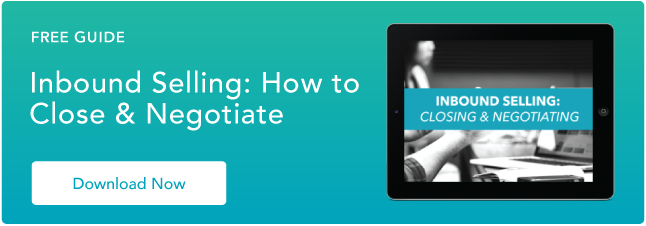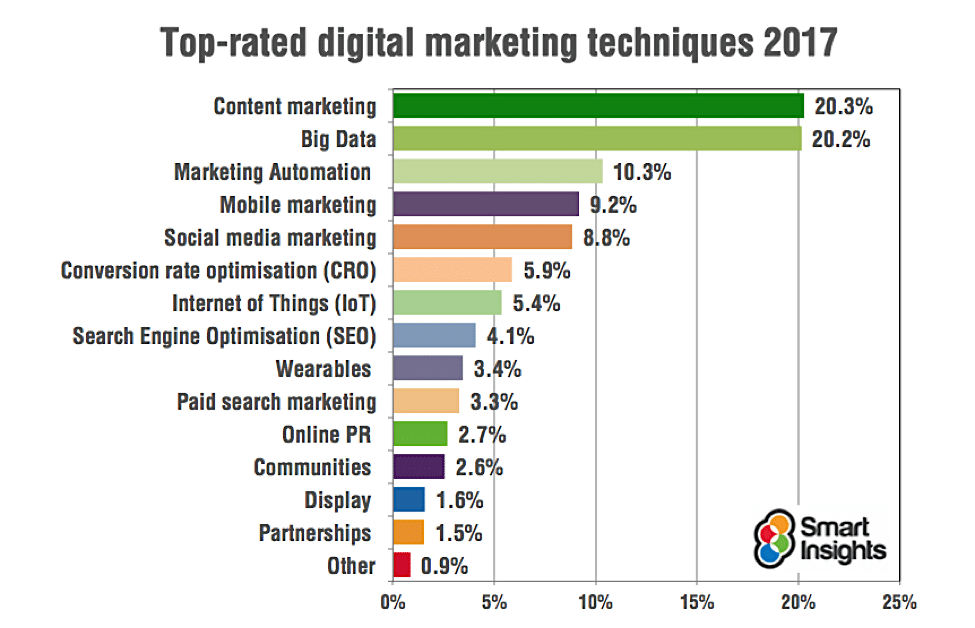Sales objections are part of the job. And salespeople commonly come up against the competitor objection when talking to new prospects. As soon as the buyer realizes the nature or function of your product, she says something along the lines of, "We already work with Competitor X," or "We already have a supplier for that."

To overcome the competitor objection, you must:
- Figure out if your prospect truly has an existing vendor relationship or is simply not interested
- Keep them engaged in the conversation long enough to show them the value of working with you (even if they've already purchased a competing solution)
- Uncover weaknesses in their current offering or contract
Accomplishing all three can be tricky -- especially when you're on the phone and losing your prospect's attention by the millisecond.
The following responses will help you effectively overcome the competition objection so you can move forward with the sale -- or appropriately respond while keeping the door open if they end up choosing the competitor over your product.
10 Ways to Respond When a Prospect Is Already Working With a Competitor
1. "That's good to hear -- [competitor] is a great company. In fact, we share a lot of mutual customers. Companies that use both of our offerings often find that our product makes accomplishing [X goal] much easier, since it has [unique benefit #1] and [unique benefit #2]."
This response lets you differentiate your product from the competition without slinging mud.
Plus, it opens the door for another conversation down the line. Once you've won the prospect's trust, you can start talking about a switch if that's in the buyer's best interest.
2. "At this point, I'm not asking you to rip anything out. I'd just like the opportunity to show you how we're different and how we've provided additional value to our customers. I can present some use cases of other companies like yours who work with us and with Competitor X. When is a good time to schedule a follow-up call?"
According to Bryan Gonzalez, business development manager at Procore, this response will give you the opportunity to prove what your product does differently -- and ultimately, show the prospect why they need it.
3. "Got it. Can I ask what type of evaluation process you go through to be sure you're getting the best service available?"
As president of Business By Phone Art Sobczak explains, you need to plant doubt in the prospect's mind before they'll ever consider changing vendors. They probably haven't thought about their decision to use the competition since they signed the contract -- this question will have them wondering whether it's still the right choice.
4. "Have they ever let you down?"
Founder of Trigger Event Selling Craig Elias recommends using this question to challenge the prospect's status quo. If the prospect says yes, follow up with, "How did that impact your business?"
Finally, ask what the vendor did (if anything) to make up for the issue and prevent it from happening again.
"Once you know more about the letdown, you can ask if they would like to work with a more reliable vendor they can have confidence in," Elias writes.
5. "That's great. What do you like best about working with [competition]?"
Asking the prospect to think about all the reasons they love the competition probably seems like a bad idea. But sales strategist Dan Fisher says this question actually prompts his prospects to explain what they didn't like about their vendors. The trick? You have to be patient.
"No matter what they say in response, wait seven to 10 seconds," Fisher says. "The silence will become uncomfortable -- and that's when the prospect will often offer up a negative comment or concern."
6. "I'm glad you're [dealing with X challenge, recognize the importance of doing Y]. How's it going?"
The first part of this answer validates the prospect, while the second gets them to open up. Once they're talking about their situation, you can figure out how happy they are with their current vendor. What's working well? What's not? Pay special attention to complaints that could be solved with your product.
Alternatively, try: "Oh, I'm familiar with [competition] -- we actually used them at my old job. Right now, I'm not trying to convince you to go with us instead. I think it makes sense to explore your situation first and see if [product] is even a good fit."
Mentioning you're a former user gives you instant credibility. In addition, many prospects respond well to this calm, friendly approach. Again, the goal is to simply get them talking about their situation.
7. "That's great. I'm wondering, however, if you're still struggling to overcome [X challenge]. I ask because I saw you [posted something along those lines on LinkedIn, tweeted about it, downloaded one of our ebooks on that, etc.] I actually have a couple suggestions for you related to that challenge -- would it make sense to schedule a call to discuss them?"
Of course, not every buyer will be so kind as to advertise displeasure with their current provider through a negative review or critical social media post. But if you take the time to research before reaching out and analyze the prospect's online behavior, you might get wise to a not-so-perfect fit.
For instance, are they seeking help in a specific area that your competitor should cover? If they're looking for help online, their current vendor clearly isn't solving all of their needs. Help the prospect first, and they'll be more receptive to hearing about your product later.
8. "Of course -- many of our current customers have used different suppliers in the past. But I'm reaching out to discuss ways you could [tackle business pain, increase results, maximize this investment]. Would you be interested in scheduling another call to talk about that?"
In modern sales, "Always Be Closing" has been replaced with "Always Be Helping." After you've helped the prospect with a challenge, they'll be more receptive to hearing about what your company has to offer. Even better, it's probably been a long time since anyone from their current provider called them up solely to offer some free advice -- so you'll start to look more attractive than the competition.
9. "Good to hear. I'm curious, what do you think makes the relationship work so well?"
Mike Schultz, president of RAIN Group, says this question is a non-threatening way to make the prospect open up. After they respond, you can probe further into the relationship by asking a series of "I'm curious to know" questions.
For example: "I'm curious to know -- what's their average response time when the network goes down?" or "I'm curious to know -- does your account manager call just to check in?"
When the prospect answers "no" to a question, Schultz recommends digging deeper to find ways you may be able to improve on their current service.
10. "How long have you been working with that vendor?"
This question allows you to learn more about your prospect's relationship with the competition without sounding too aggressive or intense.
It's simple enough for him to answer, but you'll be able to intuit a good deal of information. For instance, if he says, "We've used them since our company was founded in 1996," that tells you he's probably experiencing some of the pains of a legacy system or an offering that hasn't scaled with their business.
On the other hand, if the buyer says, "The person who previously held my role set up the contract two years ago," you'll know he wasn't personally involved in the decision. There may be an opportunity to present your product as a more sophisticated, useful, or well-designed alternative that'll help him drive better results than the current one.
5 Ways to Respond When a Prospect Chooses a Competitor
If the customer comes out and tells you that they've chosen your competitor and signed on the dotted line, you have a limited window where you can keep the relationship positive and keep the door open for future conversations. The customer likely doesn't want a lengthy conversation about why they should choose you at this point, so while you can use these responses and prompts as guidance, if the customer makes it clear they want to end the conversation, respect their boundaries to avoid burning a bridge.
1. "I see. Do you have a contract with them?"
If the prospect is locked into a contract and you truly believe switching is in their best interest, you have a couple options. Help them off-set the costs of breaking it early by giving them a discount or showing them the ROI of the switch. Alternatively, find out when their agreement expires, and let them know that you'll reach out again a month or two before that date.
2. "I see. What results are you getting?"
There's always room for improvement. Once the buyer tells you the return they're currently seeing, you'll know what you're up against.
Imagine your prospect says the recruiting service she's using reduces average cost-per-hire by 30%. You might respond, "Clients who have switched to our firm from your current one typically drive down their average CPH by a further 10%. Would that have a significant impact on your hiring budget?"
If she says no, she's probably not the best fit anyway.
Alternatively, you can offer your help in improving their existing strategy -- no strings attached. Say, "That's great. I have a few tips that have helped my customers get their CPH even lower. Would you be interested in setting up another call to hear them?"
Once you've earned her trust and gratitude by helping her, she'll be far more receptive to your pitch.
3. "Ah, yes. We have a few clients who used to work with that vendor. Tell me, have you experienced any issues with [common vendor pain point]?"
This is a similar tactic to number one -- but it pulls at pain points a bit more. If you choose this response, always use challenges you've verified with several of their former clients.
If your prospect confirms they've experienced similar issues, this is not an invitation to trash talk. Instead, focus on the solutions your product/service can offer instead. This keeps the tone positive and future-focused.
4. "Is your contact up for renewal anytime soon?"
It's best not to waste your prospect's time or yours. By asking whether their contract is up for renewal soon, you can gauge whether or not there's any reason for the conversation to continue.
If they've just signed a two-year extension, they're likely happy with the provider and unable to change vendors for the next 24 months. This is a good example of where a single question can tell you all you need to know.
5. "Okay, I appreciate your time speaking about [Product] over the past couple of weeks. Would you mind if I made a note in my calendar to reach back out to you again in [a quarter; 6 months; a year] to see how things have been going?"
At this point in the conversation, the customer might have made it clear that they've signed on the dotted line, and that they aren't interested in purchasing anything from you or your company at this point. But it can't hurt to try to keep the door open.
Use this response to keep up a friendly relationship, to establish yourself as a conscientious salesperson, and to keep the lines of contact open. If the customer agrees, when you follow back up in the future, use it as an opportunity to hear how they're doing in their personal and professional life, and to establish yourself as an ally, before diving back into another sales pitch. At that point, you can use the first several responses on this list to see how they're finding working with a competitor -- and if they might be interested in switching.
There's a silver lining to hearing the "we already use Competitor X" objection: It means that half your work is already done. After all, you don't have to educate your prospect on their problem -- you just need to show them why your product is the best fit.
If you're looking for more objection-handling tips, check out this article on overcoming the dreaded, "It costs too much." Or try one of these customizable sales scripts for handling objections over the phone.
























































 I meet too many salespeople who think networking with people they know is the same thing as prospecting. Don’t kid yourself!
I meet too many salespeople who think networking with people they know is the same thing as prospecting. Don’t kid yourself!









